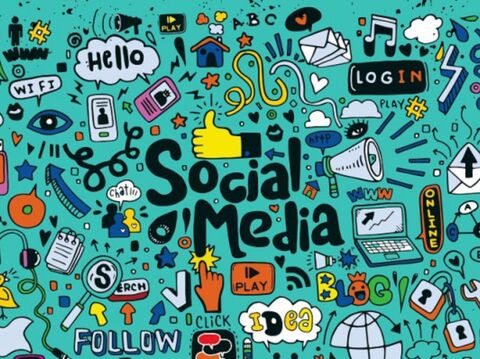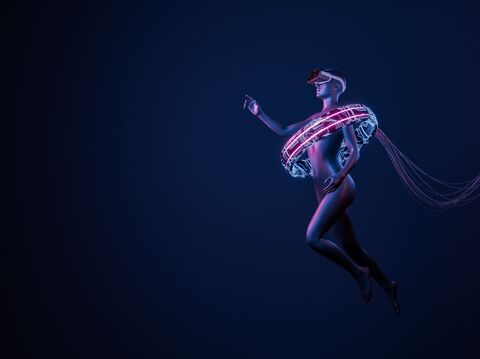Creative Fatigue is Killing Your Ads: How to Detect Ad Fatigue Before It Costs You Thousands

You check your ad account and feel that familiar sinking feeling. Yesterday's hero creative that delivered ₹150 CPA is now burning through budget at ₹450+ per conversion. The comments section has turned toxic. Your ad fatigue frequency is sitting at 4.2, and you're wondering how the hell you missed the warning signs.
Sound familiar? You're not alone. Recent research reveals that 61% of consumers actively avoid brands that show them the same ads repeatedly. Even worse, 70% have unsubscribed from brands in the last three months due to creative fatigue overwhelming their feeds.
Here's the brutal truth: ad fatigue detection isn't optional anymore - it's the difference between scaling profitably and haemorrhaging cash on burnt-out creatives.
According to Analytics at Meta, once audiences see your creative more than 2.5 times, performance typically nosedives. Your click-through rate plummets, cost per mille skyrockets from ₹9-10 to ₹25+, and return on ad spend makes your finance team question every rupee spent.
Companies implementing proper frequency capping and creative testing maintain 63-78% higher success rates than those running ads until they're completely saturated. This guide shows exactly how to spot creative fatigue before it destroys your performance.
What is Ad Fatigue And Why It Kills Campaigns
Ad fatigue is what happens when your audience sees the same creative repeatedly until they stop caring.
Think of it like that friend who keeps telling the same joke at every party. Initially, it's funny and engaging. But by the third time you hear it, you're mentally tuning out. By the fifth time, you're actively avoiding conversations with them.
This is rooted in basic human psychology. Our brains naturally tune out repeated stimuli through a process called habituation. When consumers are repeatedly exposed to the same ad, they literally grow numb to it and tune out.
The problem compounds because 91% of users find that ads have become more intrusive[1], and 87% feel there are more ads than ever. In today's oversaturated market, audiences are already primed to ignore advertising. When your creative becomes repetitive, you're not just fighting for attention, you're actively pushing people away from your brand.
Check out how creative content can bring marketing success for brands
Here's Exactly How Ad Fatigue Destroys Your Campaigns:
Ad fatigue can have a significant impact on your campaigns, with conversion rates starting to decline and cost per action increasing as a result.
- Performance metrics collapse overnight: Your click-through rate (CTR) can drop 50-70% within weeks as audiences develop banner blindness to your creative
- Cost per mille skyrockets: Platforms charge more to show ads that fail to attract clicks or engagement, pushing your CPM from ₹9-10 to ₹25+ in the Indian market
- Audience targeting becomes worthless: Even perfect demographic targeting can't save burnt-out creatives from algorithmic punishment
- Brand reputation takes lasting damage: Continuous exposure to repetitive advertisements generates consumer irritation and resentment, associating your brand with intrusive and uninspired marketing
- Return on ad spend vanishes completely: Customer acquisition costs increase while return on ad spend falls as audiences actively avoid your oversaturated content
- Platform algorithms turn against you: Meta and Google's systems detect declining engagement immediately, reducing your reach and prioritising competitors' fresh creatives
- Negative feedback loops accelerate: Users start hiding, reporting, or blocking your ads, creating lasting damage to your account's reputation and delivery
Early Warning Signs: How To Detect Ad Fatigue Before It Hits
Smart advertisers spot the warning signs early. Modern platforms provide sophisticated detection tools, but knowing which metrics matter most separates profitable campaigns from budget burners.
Platform-specific fatigue notifications
Meta Ads Manager now predicts creative fatigue within the first 7 days of campaign launch.
The platform displays clear warnings in the Delivery column: "Creative Limited" when cost per result exceeds previous ads by less than 2x, and "Creative Fatigue" when costs double or more.
These notifications appear automatically, giving you advance warning before performance completely collapses.
Critical Performance Metrics To Monitor
The metrics below are your first line of defence against ad fatigue. Monitor these weekly to catch performance decline before it destroys your return on ad spend.
- Frequency above 2.5: Analytics at Meta confirms this threshold triggers performance decline in most campaigns. Monitor weekly - anything above 3.0 for retargeting means immediate action required.
- CTR decline patterns: A 20-30% drop in click-through rate within days signals early fatigue. Watch for consistent downward trends over 7-14 day periods rather than daily fluctuations.
- Rising cost indicators: CPM increases of 50-100% whilst CTR stays flat indicates algorithmic punishment. Your ₹9-10 CPM jumping to ₹15-20 means platforms detect declining engagement.
- Conversion cost spikes: CPA increases without targeting or budget changes reveal creative burnout. Track cost per result trends, sudden jumps can indicate audience saturation.
Learn how to optimize your Facebook ads like a pro
Advanced Detection Methods
These sophisticated indicators reveal fatigue before basic metrics show decline. Use them to stay ahead of algorithm changes and audience behaviour shifts.
- First-time impression ratio: Meta's delivery insights show percentage of daily impressions from new users. When this drops below 50% for top-funnel campaigns, audience saturation is imminent.
- Engagement decay patterns: Monitor likes, shares, comments alongside conversion metrics. Social engagement drops before conversion metrics, providing early warning signals.
- Cross-platform frequency tracking: Users see creatives across multiple placements. Check combined frequency across Facebook, Instagram, and Audience Network to identify true exposure levels.
- ROAS plateauing: Return on ad spend flatlining despite stable budgets indicates creative effectiveness declining before costs spike.
Creative Refresh Strategies: Artistic vs Ugly Ads
The biggest creative testing breakthrough of 2025 isn't another AI tool - it's understanding when "ugly" beats beautiful. While brands spend thousands perfecting glossy visuals, user-generated content consistently outperforms polished campaigns. Here's why this matters and how to test both approaches strategically.
The ugly truth about beautiful ads
Professional creatives often fail because they feel like ads. Users develop banner blindness to overly polished content that screams "marketing." Research shows UGC-based ads get 4x higher CTR[2] and 50% lower CPC than professionally made brand ads.
The psychology is simple: audiences trust authentic content over advertising.
This doesn't mean every campaign needs amateur photography. It means testing creative styles systematically rather than defaulting to expensive production values.
When to choose artistic vs authentic
Use polished artistic creatives when:
- Targeting premium demographics where quality signals matter
- Building brand awareness for luxury or professional services
- Competing in saturated markets where production value differentiates
- Testing on LinkedIn where professional aesthetics align with platform expectations
Use authentic "ugly" creatives when:
- Driving direct response conversions over brand awareness
- Targeting younger demographics who value authenticity over polish
- Fighting creative fatigue with established polished campaigns
- Testing on Instagram Reels or Stories where raw content feels native
Learn more about Facebook ads vs organic reach and how to balance both
Testing framework for creative styles
Start with 70/30 split testing - 70% of budget on your control creative, 30% on experimental styles. Run tests for minimum 7-14 days to account for audience saturation effects. Monitor CTR and downstream metrics like cost per acquisition and return on ad spend.
Create testing variations systematically: take your hero polished creative and test against user-generated style versions, testimonial screenshots, behind-the-scenes content, and deliberately amateur aesthetics.
Document the styles that work for different campaign objectives and audience types.
Creative rotation timing
Artistic creatives typically last longer before audience saturation hits. Professional visuals can maintain performance for 3-4 weeks with proper frequency capping.
Authentic content burns out faster, usually within 7-14 days, but drives higher initial engagement.
Use this timing strategically: launch with authentic creatives for rapid testing and immediate performance data, then transition to polished variants for sustained campaigns. This approach maximises both initial conversion rates and long-term campaign efficiency.
When and how to refresh: Your systematic approach
Timing your creative refresh wrong can cost more than running fatigued ads. Refresh too early, and you waste performing creatives. Wait too long, and you waste budget on dead campaigns.
The 3-2-1 refresh framework
Monitor performance metrics every 3 days during campaign launch.
When two warning signals appear simultaneously (frequency above 2.5 + CTR drop 20%), you have 1 week maximum to refresh. This framework prevents panic refreshes whilst catching fatigue early.
Graduated refresh strategy
Never replace all creatives simultaneously. Start with a 20% budget allocation to new variants while maintaining 80% on current performers.
If new creatives outperform by 15% after 72 hours, scale to a 50/50 split. Complete transition only when new variants prove stability over 7 days.
Creative refresh hierarchy
Change elements systematically, not randomly.
- First refresh: swap primary image or opening hook (highest impact).
- Second refresh: adjust colour schemes and layouts.
- Third refresh: rewrite copy angles completely.
- Fourth refresh: change format entirely (video to carousel, static to reel).
Platform-specific refresh cycles
- Meta campaigns need refresh every 14-21 days for broad audiences.
- Google Display refreshes every 28-35 days due to different impression patterns.
- LinkedIn tolerates longer cycles at 35-45 days.
- Instagram Reels burn fastest, requiring weekly updates.
Pre-emptive production pipeline
Maintain 3x creative inventory ready before launching campaigns. For every live creative, keep two tested variants waiting.
Batch production monthly saves 40% versus reactive creation. Schedule shoots quarterly, not when performance crashes.
Testing during refresh
Use refresh periods to test new angles, and each refresh should introduce one bold test alongside safe variations. Track which refresh styles maintain performance longest to inform future production priorities.
Turn fatigue into a system you can run using intellsys
Ad fatigue is a recurring pattern you should operationalise. Treat it like a rulebook for marketing: define the signals, automate the alerts, and rotate on schedule.
Use Intellsys as the control dashboard for this. Pipe in your core metrics (frequency, unique CTR, CPM, CPA/ROAS, first-time impression ratio, quality ranking, negative feedback rate) and set rule packs that mirror your playbook.
For e.g., “if frequency > 2.5 AND CTR ↓ ≥20% OR CPM ↑ ≥50%, trigger a 3-2-1 refresh ticket, spin up the next creative variant from the library, and re-evaluate in 72 hours.” Intellsys keeps the cadence honest (dashboards, anomaly flags, tasking) so you’re rotating before decay, not after.
When you run this as an operating system, ROAS holds, brand sentiment stabilises, and scale stops being guesswork.
FAQs on ad fatigue in marketing
How do I fix ad fatigue without pausing my best campaigns?
Start by widening audience targeting slightly, then rotate formats and hooks while keeping the offer and landing page consistent.
Enable frequency capping where available, expand placements, and schedule an ad refresh cadence that swaps creative elements in stages.
What are the most reliable signals for spotting creative fatigue early?
Track quality ranking, unique CTR, and negative feedback rate alongside standard CTR and CPM to catch creative fatigue before conversions slide.
Layer comment sentiment and save rates for video placements to see when audiences stop caring, not merely when clicks decline.
Build a weekly dashboard using intellsys of ad performance metrics that flags anomalies and triggers creative rotation tasks automatically.
How often should I refresh creatives to avoid Facebook ad fatigue?
Base your ad refresh cadence on spend velocity, audience size, and engagement decay patterns rather than a fixed calendar.
Set automation rules in Meta Ads Manager that swap variants when thresholds hit, so rotation happens before fatigue hurts ROAS.
Is rising CPM always a sign of creative fatigue?
No, CPM rises with auction pressure, seasonality, and placement mix, though creative fatigue often amplifies those movements.
Compare CPM against unique CTR and quality ranking to separate market noise from relevance problems caused by tired creatives.
What practical steps reduce audience saturation without blowing up budgets?
Introduce fresh lookalikes, refresh remarketing windows, and exclude recent engagers sooner to slow audience saturation.
Run creative testing by theme, not asset, so multiple angles share learnings and reduce waste across ad sets.








